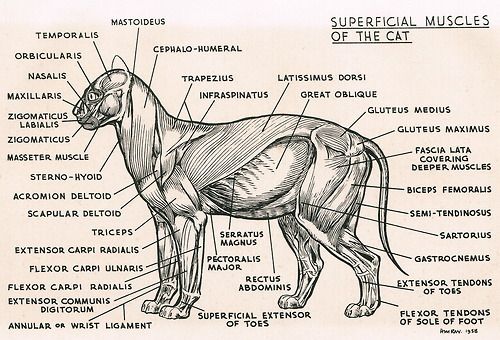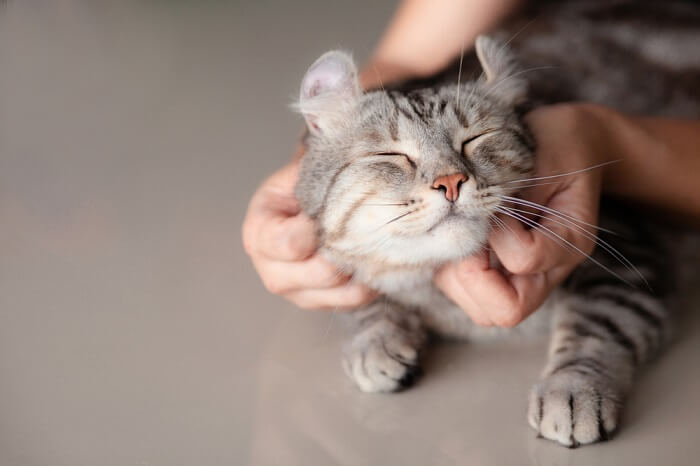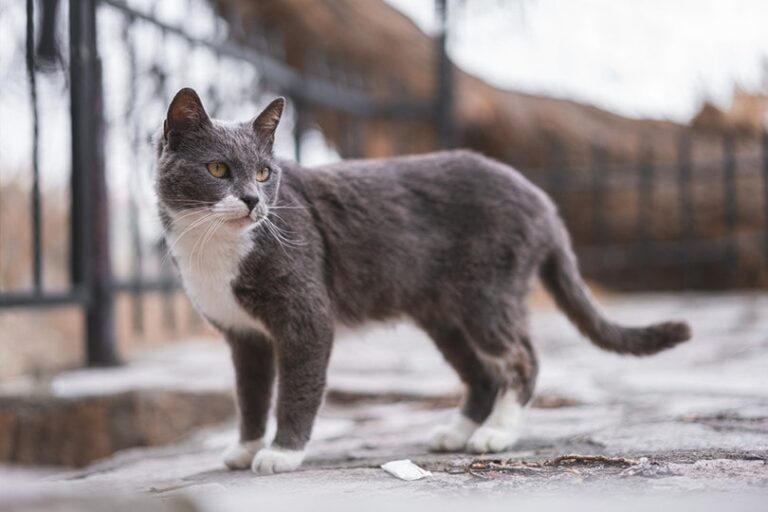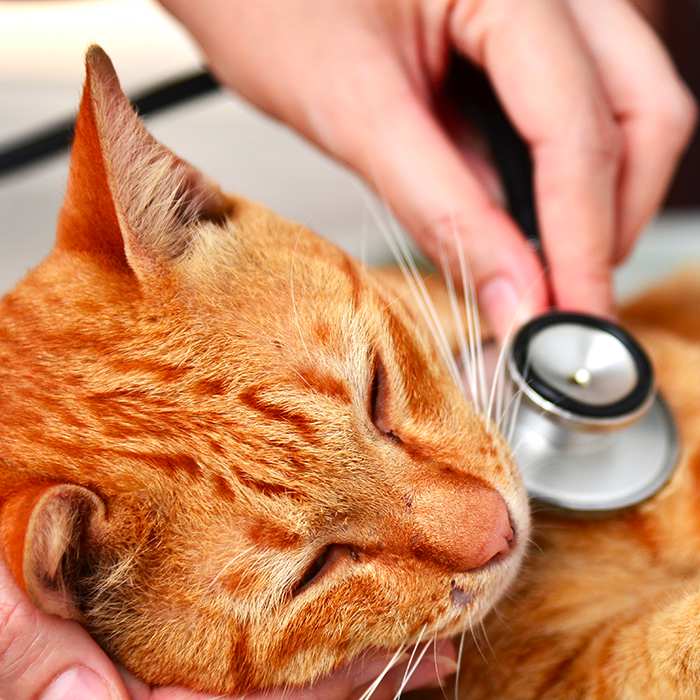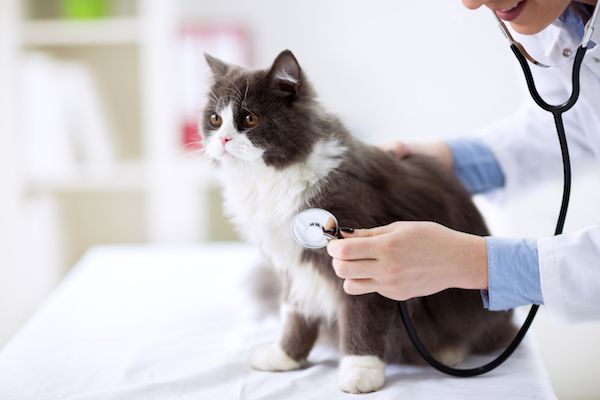Cat anatomy for veterinary students
Skeletal System: Understanding the structure and function of a cat’s bones.

The skeletal system is a vital component of a cat’s body, providing both support and protection. Like humans, cats have a complex framework of bones that make up their skeleton. These bones work together to form a strong and flexible structure that allows for various movements.
One of the primary functions of the cat’s skeletal system is to support its body weight. The bones in the legs, spine, and pelvis work in conjunction to provide stability and balance. This allows the cat to walk, run, jump, and climb with agility. Additionally, the bones in the skull protect the cat’s delicate brain and sensory organs, such as the eyes and ears, from injury.
In addition to support and protection, the skeletal system plays a crucial role in the production of blood cells. Within the bone marrow, a soft tissue found inside certain bones, red and white blood cells are produced. Red blood cells carry oxygen to the body’s tissues, while white blood cells help fight off infection and maintain a healthy immune system. This dual function demonstrates the importance of the skeletal system not only for physical structure but also for overall health and well-being in cats.
Muscular System: Examining the different muscles in a cat’s body and their roles in movement.
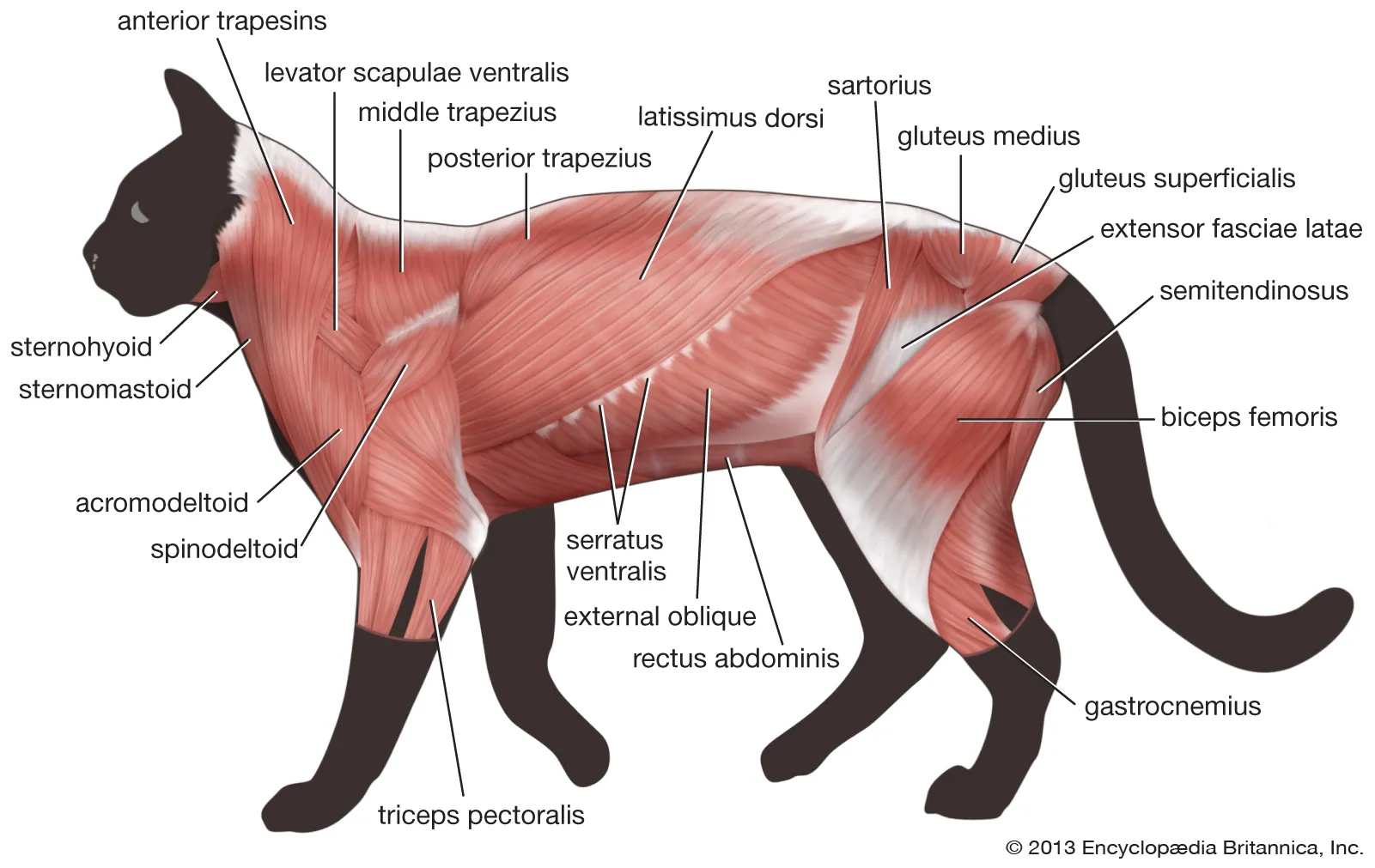
The muscular system in a cat is a complex network of muscles that enables various movements and functions. Cats have over 500 individual muscles in their bodies, each serving a unique purpose. From the powerful muscles in their legs that allow them to leap great distances, to the fine muscles in their face that control their expressions, these muscles are crucial for a cat’s survival and day-to-day activities.
One of the primary functions of the muscles in a cat’s body is movement. Whether it’s running, jumping, climbing, or hunting, the muscles work together to allow the cat to perform these actions with precision and agility. The muscles in the legs, for example, contract and relax in a coordinated manner to generate the force needed for running and jumping. Similarly, the muscles in the face provide the cat with the ability to communicate through various facial expressions and gestures. Without a well-developed muscular system, a cat would not be able to navigate its surroundings or carry out essential tasks for survival.
Nervous System: Exploring the intricate network of nerves that help cats sense and respond to their environment.

The nervous system in cats is a complex network of nerves that plays a crucial role in their ability to sense and respond to their environment. At the core of this system is the brain, which acts as the control center for all bodily functions. From there, a maze of nerves extends throughout the cat’s body, relaying electrical signals that allow for communication between different parts of the body.
These nerves enable cats to perceive their environment through their senses. Their acute sense of hearing helps them detect the softest of sounds, allowing them to locate prey or any potential danger nearby. Similarly, their sharp sense of vision grants them the ability to see in low light conditions and track fast-moving objects with precision. Additionally, the nerves in a cat’s whiskers serve as receptors, providing them with vital information about their surroundings, such as the size of an opening or the presence of obstacles.
The intricate network of nerves also facilitates a cat’s motor skills and coordination. When a cat decides to pounce on its prey, an elaborate system of nerves relays signals from the brain to the muscles, enabling precise and controlled movements. This allows them to leap, climb, and crawl with agility and grace. Furthermore, the nervous system is responsible for reflex actions like blinking, which protects their eyes from harm, or retracting their claws when they come into contact with an object.
In conclusion, the nervous system in cats is a remarkable and intricate system that enables them to navigate their environment with ease. By understanding how this system works, we can gain a deeper appreciation for the incredible abilities of these fascinating animals.
Digestive System: Investigating how a cat’s digestive system works to process food and absorb nutrients.

The digestive system in cats plays a crucial role in processing food and absorbing nutrients. It begins with the mouth, where the cat uses its teeth to chew and break down the food into smaller pieces. The saliva produced in the mouth contains enzymes that start the process of breaking down carbohydrates.
After being chewed, the food travels down the esophagus and enters the stomach. The stomach is responsible for further breaking down the food through the action of strong acids and enzymes. From the stomach, the partially digested food moves into the small intestine, where most of the nutrient absorption takes place. The small intestine is lined with tiny finger-like projections called villi, which greatly increase the surface area available for nutrient absorption. These villi absorb nutrients such as proteins, fats, and carbohydrates, which are then transported into the bloodstream for distribution throughout the body.
The remaining undigested material moves into the large intestine, where water is absorbed and waste products are formed. These waste products, along with bacteria and other cellular debris, make up the cat’s feces. The feces then travel through the rectum and are eliminated from the body through the anus.
Overall, the digestive system of a cat is a complex and highly efficient system that ensures the extraction of nutrients from food and the elimination of waste products. Understanding how this system works is essential for providing optimal care and nutrition for our feline companions.
Respiratory System: Understanding how a cat breathes and the organs involved in respiration.

A cat’s respiratory system is a remarkable network of organs that allows for the process of breathing. At the core of this system is the lungs, which are responsible for the exchange of oxygen and carbon dioxide. When a cat inhales, air enters through the nostrils and travels down the trachea, commonly known as the windpipe. From there, it branches off into smaller tubes called bronchi, which lead to smaller air sacs known as alveoli. It is within these alveoli that oxygen from the air is exchanged for carbon dioxide, a waste product produced by the cat’s cells.
The diaphragm plays a crucial role in the cat’s breathing process. This thin, dome-shaped muscle separates the chest cavity from the abdominal cavity. When the diaphragm contracts, it moves downward, creating more space in the chest cavity and allowing the lungs to expand. This expansion creates a negative pressure that draws air in. Conversely, when the diaphragm relaxes, it moves back up, decreasing the space in the chest cavity and causing the lungs to contract. This process helps to expel air from the lungs, removing waste gases such as carbon dioxide. Working in harmony, the lungs and the diaphragm ensure that a cat can efficiently exchange gases and maintain a steady supply of oxygen throughout its body.
Cardiovascular System: Examining the heart and blood vessels that keep a cat’s circulation functioning.
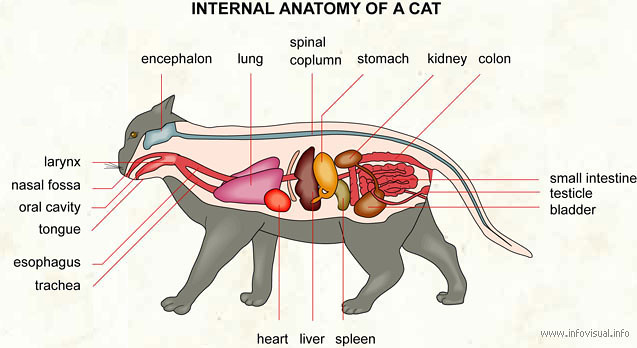
Cats, like humans and other mammals, rely on a well-functioning cardiovascular system to sustain their bodies. At the core of this system is the heart, a vital organ that ensures blood is pumped throughout the cat’s body. Situated in the chest cavity, the heart consists of four chambers: two atria and two ventricles. These chambers work in harmony, contracting and relaxing rhythmically to propel blood into the arteries and veins.
The blood vessels, essential for the transportation of oxygen, nutrients, and waste products, form an intricate network throughout the cat’s body. Arteries carry oxygenated blood away from the heart, branching into smaller vessels called arterioles, which further divide into tiny capillaries. Capillaries enable the exchange of gases, nutrients, and waste materials between the blood and tissues. Once depleted of oxygen, blood returns to the heart through veins, where it is then pumped to the lungs for reoxygenation. This continuous circulation ensures that all cells receive the necessary resources to thrive, while waste materials are efficiently eliminated from the body.
Urinary System: Exploring the organs involved in filtration and waste removal in cats.
The urinary system in cats is responsible for the filtration and removal of waste products from the body. It plays a vital role in maintaining the overall health and balance of bodily fluids. The main organs involved in this process include the kidneys, ureters, bladder, and urethra.
The kidneys are the key players in the urinary system. They act as filters, removing waste products, excess water, and toxins from the blood. These waste products, known as urine, are then transported from the kidneys to the bladder through the ureters. The bladder, a hollow organ, temporarily stores urine until it is expelled from the body through the urethra. This intricate system ensures that waste is effectively eliminated and helps maintain the body’s fluid and electrolyte balance. Understanding how the urinary system functions is important in recognizing and addressing any potential issues that may arise, such as urinary tract infections or kidney diseases.
Reproductive System: Understanding the reproductive anatomy of male and female cats.
The reproductive system of cats is a highly fascinating and intricate aspect of their anatomy. Understanding the reproductive anatomy of both male and female cats is essential for those who are involved in cat breeding or veterinary care.
In male cats, the reproductive system consists of the testes, which are responsible for producing sperm. These testes are located within the scrotum, and their function is regulated by hormones such as testosterone. During mating, the male cat’s penis is inserted into the female’s vagina, allowing for the transfer of sperm during fertilization.
In female cats, the reproductive system includes the ovaries, uterus, and vagina. The ovaries are responsible for producing eggs, or ova, which are released during a process called ovulation. If fertilization occurs, the fertilized egg will then travel to the uterus, where it will implant and develop into a fetus. If fertilization does not occur, the uterus will shed its lining, resulting in the cat’s estrous cycle, commonly known as “heat.” Understanding the reproductive anatomy of cats is crucial for ensuring optimal health and reproductive success in these remarkable animals.
What is the reproductive anatomy of male cats?
The reproductive anatomy of male cats includes testicles, which produce sperm, and a penis, which is used for mating and urination.
What is the reproductive anatomy of female cats?
The reproductive anatomy of female cats includes ovaries, which produce eggs, a uterus where the fertilized eggs develop into kittens, and a vagina, which is used for mating and giving birth.
How do male cats reproduce?
Male cats reproduce by mating with a female cat. During mating, the male cat’s penis is inserted into the female cat’s vagina, allowing for the transfer of sperm to fertilize the eggs.
How do female cats reproduce?
Female cats reproduce by mating with a male cat. After mating, the female cat’s body will ovulate and release eggs. If the eggs are fertilized by the sperm, they will implant in the uterus and develop into kittens.
Can male cats reproduce at any age?
Male cats can reproduce once they reach sexual maturity, which is typically around 6 to 9 months of age. However, it is generally recommended to wait until they are at least one year old before allowing them to mate.
Can female cats reproduce at any age?
Female cats can reproduce once they reach sexual maturity, which is typically around 5 to 9 months of age. However, it is generally recommended to wait until they are at least one year old before allowing them to mate.
How long is a cat’s gestation period?
A cat’s gestation period, which is the time from fertilization to birth, is typically around 63 to 65 days.
How many kittens can a cat have in one litter?
Cats can have varying litter sizes, but the average litter size is around 4 to 6 kittens.
Can cats have multiple litters in a year?
Yes, cats can have multiple litters in a year. They are capable of breeding throughout the year, especially if they are not spayed or neutered.
What is the role of spaying or neutering in cat reproduction?
Spaying or neutering cats involves the surgical removal of their reproductive organs. This helps control the cat population and prevents unwanted pregnancies. Spaying also eliminates the risks of certain reproductive diseases in female cats, while neutering reduces the likelihood of certain behavior problems in male cats.

